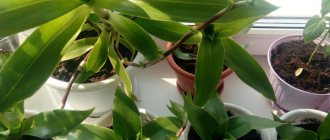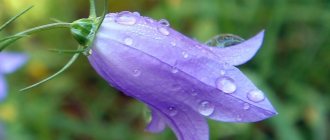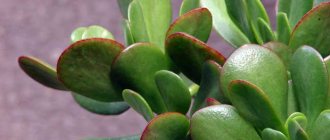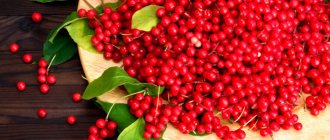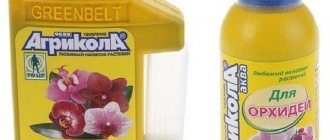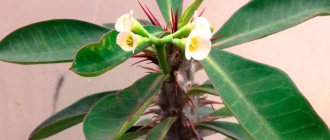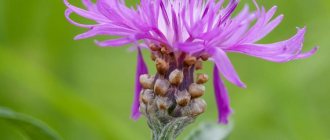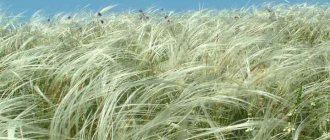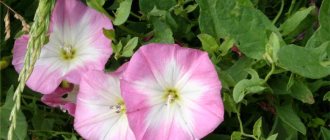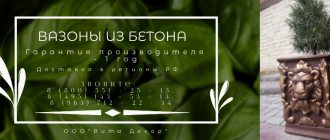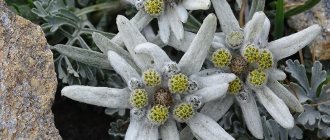Small white and purple potato flowers are very decorative. In time immemorial, ladies decorated their hair with them, inserted them into boutonnieres and pinned them to hats. The flowers of this plant began to be used in medicine relatively recently. Homeopathy was the first to appreciate their healing properties. There is nothing surprising. Solanine, which accumulates more in potato flowers than in other parts of it, is poisonous. In large quantities it causes poisoning, sometimes fatal, but in homeopathic doses it is indispensable for treating a wide variety of ailments. In this article we will talk about the medicinal properties of potato flowers, and also give recommendations for preparing healing infusions.
Beneficial properties of solanine
Solanine (melongene) is the main active ingredient of potato flowers. Experiments conducted on experimental animals suffering from kaolin arthritis showed that microscopic doses of solanine inhibit the development of inflammatory processes.
The chemical structure of the alkaloid solanine is close to cardiac glycosides and corticosteroids. Solanine has the most significant effect on the functioning of the myocardium, adrenal cortex and kidneys. Preparations and tinctures from potato flowers reduce blood pressure, increase cardiac activity - increase the amplitude of heart contractions and reduce their rhythm. Lotions made from potato flowers act as a pain reliever, can relieve burn shock, and suppress the proliferation of many pathogens, for example, Staphylococcus aureus, Candida fungi, etc.
Next, we will dwell in more detail on the various medicinal properties of potato flowers and contraindications to their use.
Dosage of the drug
This issue should be dealt with by a doctor, since we are all different, and our diseases may also differ. The medicine from potato flowers is taken strictly drop by drop, and you not only need to carefully monitor your well-being, but also record any changes in it. When you see a doctor, be sure to take out all the notes and tell the doctor how your condition has changed throughout the course of treatment. If you feel unwell, stop taking the drug until you consult with your doctor.
Potato flower tincture is taken 3 drops twice a day. After just two days of taking it, you need to take a break for three days. If you feel normal, the doctor may schedule an appointment for up to a month.
Warning
Before we start talking about treatment with potato flowers, we consider it necessary to explain why this method of therapy must be approached very carefully and carefully. In the medical community, there is a contradictory attitude towards the medicinal properties of potato flowers. The danger from an overdose of solanine is too great, because even a single dose of a large amount of decoction can lead to the death of the patient. Our recipes contain dosages calculated for an adult of average height and normal weight. In case of any deviations from it, it is better to reduce the amount of medicine per oral dose.
Even a small dose of solanine has a powerful destructive effect on pathogenic microflora. In order for the medicinal properties of medicinal infusions of potato flowers to bring only benefit, you need to know that 20 mg of solanine, that is, one tablespoon, is an almost lethal dose for a person with poor health. However, it is very difficult to eat such an amount of poison at once - so much solanine is contained in several glasses of freshly picked and tightly compacted flowers or in 1 kg of very green tubers. Solanine does not disappear from flowers even after drying - they only lose water. Thus, one tablespoon of crushed dried flowers contains more solanine than the same volume of fresh flowers, but still not so much as to kill an adult.
Tips for caring for indoor nightshade
Lighting. Nightshade is a light-loving plant. Prefers diffused light. In the shade, nightshade almost does not bloom, stretches out and loses its decorative effect. In winter and autumn it is better to keep it on a south-facing window; from mid-spring it is advisable to shade it from direct sunlight. In summer, the best place for nightshade is a balcony or veranda.
Temperature. In summer, nightshade grows well at normal room temperature; it does not like heat; it benefits from changes in night and day temperatures. In winter, it is recommended to reduce the temperature to 12-15 °C. In cool conditions, the berries stay on the branches longer. In summer, it is too hot for the plant on a south-facing window.
Watering. Decorative nightshade is watered regularly and abundantly during the period of active growth and fruiting. In winter, watering is reduced to moderate; the cooler the room, the less moisture is required. But at the same time, you should not overdry the earthen lump. It is useful to spray with slightly warm water.
Fertilizer. Additional nutrients are needed for the formation of flowers and fruits. Fertilize twice a month with complex fertilizers for flowering plants in spring and summer. In winter, you can not fertilize or feed with a half dose once a month.
Trimming. Nightshade tolerates pruning well. It is carried out after fruiting in order to preserve the decorative appearance of the bush. At the end of winter, the leaves of the plant often turn yellow and fall off. Pruning has a beneficial effect on the condition of the plant. First of all, the main stem is shortened to stimulate the growth of side branches. Then they pinch off their ends.
Transfer. It is best to replant indoor nightshade in early spring before growth begins. The substrate must be loose and breathable. Be sure to add a layer of expanded clay or other drainage material in the pot so that excess water flows out freely. The nightshade is heavily pruned (by about a third) and transplanted into fresh soil.
Pests are often discovered when moving pots from the garden back into the house. In summer, aphids appear on the plant. Bushes must be treated with insecticides for prevention.
Seeds can be collected and sown in a wide container in the spring. They are not buried in the soil, but simply laid out on the surface and lightly sprinkled with sand. Germinate at a temperature of 20-22°C under film. Shoots by
In spring and summer, it can be propagated by cuttings, which take root well in a mixture of equal parts of peat soil and sand. Cuttings are taken with 2-4 leaves and rooted under film. For better branching, young plants are pruned several times during the summer.
Download Original]' imagefield-lightbox2 imagefield-lightbox2-resizeimgpost-500-500 imagefield-field_imgblogpost imagecache imagecache-field_imgblogpost imagecache-resizeimgpost-500-500 imagecache-field_imgblogpost-resizeimgpost-500-500″>
Decorative nightshade can be found in almost any flower shop, especially often before the New Year. Nightshade bushes look very beautiful and festive thanks to their bright orange-red berries that resemble cherries.
Nightshade belongs to the vast nightshade family and is native to South America. Both vegetable and ornamental representatives of this family are known in culture. There are about 1,500 species in total. Some of them have medicinal properties. Thus, nightshade berries are effectively used to treat sore throat.
Procurement of raw materials
The collection of potato flowers should be done in August, in dry weather, in the morning, after the dew has disappeared. Fully bloomed flowers of both white and purple colors are suitable for medicinal purposes.
The collected raw materials must be laid out in a warm, dry, ventilated room and covered with gauze. After two or three weeks, depending on the temperature, when they are dry, put them in linen or cotton bags. Store indoors, protected from dampness and bright sunlight.
Another harvesting method is to cut the potato stems along with the flowers and tie them into bunches. Hang these bunches under the ceiling of a dry shed or veranda. As necessary, pick flowers and prepare decoctions. This is how they did it in the old days. Then brooms with potato flowers were placed in attics. This is very convenient, as it ensures that poisonous flowers, placed high enough, will not fall into the hands of children, who love to taste all their mother’s or grandmother’s preparations, knowing that it is either very tasty or very healthy.
In the future, flowers dried using one of the described methods can be used for treatment. Both aqueous and alcoholic infusions are made from dry raw materials.
Below is information on different ways to use potato flowers. The medicinal properties and dosage advice, as we have already said, apply to the average adult. For any deviation from the norm, the dose must be adjusted, but only downward. This recommendation applies to the internal use of infusions. External application has practically no contraindications.
Pain in joints and knees
This is one of the most common problems, for which they resort to traditional medicine. Probably anyone over 40 knows how much trouble knee pain can cause. Potato flowers in medicine are considered the best, inexpensive and extremely effective way that really helps in solving such problems. Let's take a closer look at the features of preparing a tincture for the treatment of joint diseases. You will need to collect the flowers immediately after they have bloomed. During this period, their healing properties are at their peak. Collection is carried out in warm and dry weather. Dry them in the shade, but always in a warm place.
After the raw material has completely dried, it is poured into a plastic container (0.75 liters) and filled with vodka or cologne. Place the closed container in a warm place for two weeks. Do not shake. To treat the diseased joint, rub this tincture and wrap it with a warm scarf. You need to use the entire bottle. If the pain does not go away, it means that the disease is very advanced. In this case, you need to take a break and undergo treatment again.
Water infusion
A water infusion is made from both fresh and dried flowers. In the second case, their number should be significantly less. A distinctive feature of solanine is that its concentration in the substance does not decrease over time. In the light, as a result of the photosynthesis reaction, the amount of solanine increases.
When boiled, solanine is not destroyed, but goes into water. To prepare decoctions, you need to use glass or ceramic dishes, or enamel, with no chips. This will prevent the formation of unwanted chemical compounds. The water infusion is prepared for one, or at most two days. For surface application, you need to pour it into a spray bottle or use tampons or applicators.
Boiling time – 15 minutes. Then the infusion should be wrapped and kept in a warm place for about an hour. Filter the prepared solution and use as needed.
Potato flowers can be brewed in a thermos with a glass flask. To do this, place a handful of flowers in a flask and leave to steam for about forty minutes. Then strain through cheesecloth or a sieve.
On the relationship between flowers and fruits
Some vegetable growers claim that if a crop begins to bloom, then root crops have also appeared. They thus indicate the relationship between flowers and fruits. There is an opinion that flowers receive about twenty-five percent of nutrients. The leaves and stem account for the remaining twenty-five percent. Everything else goes into fruit. This means that potato flowers take up more organic matter than tubers. Consequently, the starch content in the root crop decreases. Therefore, the tubers grow small and deformed. If you use such potatoes as planting material next year, the yield will decrease by another half.
However, during experiments it was proven that potatoes are formed long before the buds appear. This suggests that recommendations for watering before potato flowering also apply after it. This culture loves water very much. The only water limitation exists if the site is located in a wetland.
So is it necessary to pick off potato flowers? More than one generation of vegetable growers has been thinking about this issue. And if you are reading this article, you are also faced with this dilemma. Better enjoy the beautiful view of the flowering field. In your free time, watch the plant, experiment with watering and fertilizing. Listen to the demands of the culture. Learn to determine what the plant needs. Then the potatoes will definitely thank you with a large harvest.
Alcohol infusion
In some cases, instead of a water decoction, it is more advisable to use an alcohol infusion, and it is quite simple to make. Next, we will tell you how to prepare an infusion of potato flowers. The healing properties of alcohol, by the way, are much more pronounced than water, since solanine dissolves better in alcohol than in water.
The glass jar needs to be filled to the top with fresh flowers and lightly compacted. Fill them with medical alcohol or vodka. Cover tightly to prevent evaporation and place in a warm, dark place. In two to three weeks the infusion will be ready.
The maximum daily dose for oral administration is 10 drops.
Alcohol tincture is used not only for drinking, but also for rubbing.
The healing properties of potato flowers for joints are well known. Rubbing and compresses quickly relieve pain and reduce swelling.
The shelf life of the alcohol infusion is limited to three years. It does not deteriorate and does not lose its properties if placed in a dark glass container with a tightly screwed non-metallic lid, or better yet, a wine stopper.
Medicinal properties of potatoes
You've probably already noticed that there are no flies flying around potatoes. This is very easy to explain, because the flowers contain a large amount of toxic substances, alkaloids. This is the poison you know called solanine. In this way, the plant perfectly protects itself from pests. By the way, solanine is found not only in flowers, but also in green tubers. Therefore, if you need medicine in winter, when spring is still far away, you need to take out the potato tubers and place them on the windowsill, where the sunlight falls. After this, you need to remove the green layer of the peel and use it in the same way as flowers.
Radiculitis, myositis, lumbago
For myositis, lumbago, radiculitis, especially for pain in the lumbar spine, rub the sore spot with an alcohol solution of flowers, and then apply an insulating bandage, such as a wide belt made of natural wool.
It is advisable to do the procedure at night. The pain goes away very quickly.
In general, the medicinal properties of potato flowers are best used externally. In this case, the risk of solanine poisoning is completely eliminated.
The medicinal properties and use of potato flowers infused with alcohol is one of the most effective ways to quickly get rid of acute pain caused by hypothermia or from being in a draft for a long time.
Every home medicine cabinet must have a bottle of alcoholic infusion of potato flowers. After a long stay in the cold, you can protect yourself from a cold if, when you come home, rub your feet with this tincture, and then put on woolen socks.
Is it necessary to pick flowers from potatoes?
Gardeners and potato growing specialists have long been concerned with the question: is it necessary to pick flowers from potatoes to increase the yield?
Those who believe that it is necessary explain their position by the fact that tubers are formed at the same time when the plant begins to bloom. After which the tubers gain weight, and the flowers form fruits containing seeds. Beneficial substances are evenly distributed throughout the plant, so it is logical to think that if you pick off the inflorescences, more growth energy will be directed into the remaining plant, which will lead to an increase in the size of the roots. This hypothesis has been proven in practice. People who began to pick flowers for medicinal purposes noticed an increase in yield.
However, debate continues as to whether bud removal has an impact on crop size. An experiment conducted on several rows of the same potato variety is described. Care for all rows was the same. The only difference was that on some the tops of the bushes with inflorescences were completely cut off, on others only flowers and buds were torn off, and still others grew naturally. As a result, in the first rows of the bushes there were up to 30 ovaries, but very small (no more than 1-2 cm) in size. In the second case, there were about 10 tubers, the size of a chicken egg, and in the third, where nothing was removed, there were up to five root crops, but larger ones - 8-10 cm.
This experience shows that if you cut off the tops or inflorescences of potato bushes, the yield will not increase. Although there is an opinion that the result depends on the variety of potato, and there are varieties that need the above procedure. So each gardener must decide for himself whether or not to pick off the inflorescences. If we consider that they can be used as a medicinal plant, then it is advisable to do so.
Arthritis
The healing properties of potato flowers for joints (reviews confirm this), in this case they are used no less widely than in the case of a cold or hypothermia. Arthritis is almost always accompanied by severe pain and swelling in the knee area. Compresses made from potato flowers with alcohol effectively alleviate the patient's condition.
The knee should be wrapped in a towel soaked in alcohol tincture, covered with plastic wrap and insulated with a woolen scarf. It is most convenient to do this at night. By morning there will be no trace of pain and inflammation. The healing properties of potato flowers for joints are well known. They can be recommended without fear of complications or unwanted side effects.
The unique healing and pain-relieving properties of potato flowers can be used for a variety of ailments. External use of infusions has no contraindications, however, patients diagnosed with arthritis should under no circumstances use infusions of potato flowers internally. This can cause an exacerbation of the disease and will only harm your health. In this case, the medicinal properties of potato flowers can be used only for external use.
The opinion of official medicine
Doctors have long noticed that alkaloids can be beneficial to humans. This guess was based on the fact that with the help of this substance, potatoes are protected from pests. That is, what prevents pests from infecting a green bush should protect and heal a person. In fact, different scientists have different opinions about this, some support this idea, others consider it erroneous. But traditional medicine has long been fighting a variety of diseases using potato flower tinctures. You can give a huge list of ailments that have been successfully overcome, including tuberculosis and cancer.
The main postulate is that the poison contained in the drink can kill any disease. But you must remember that you need to use it extremely carefully so as not to harm yourself. It is solanine in small doses that can have a beneficial effect on the body. With this tincture, tuberculosis and any diseases of the upper respiratory tract are no longer scary. Tinctures will easily defeat any fungus, work great as external lotions, and cure joint diseases. Brushing your teeth with regular toothpaste, to which a couple of drops of tincture have been added, allows you to rid your mouth of caries. Stomach ulcers and liver diseases, diabetes, as well as high or low blood pressure are highly treatable. Based on all that has been said, we can summarize: tincture of potato flowers is a universal medicinal remedy, however, in order for the body to receive only benefits from its use, it is necessary to carefully coordinate the dosage with the attending physician.
Tonsillitis, cold
For tonsillitis, an infusion of potato flowers is used to gargle. You need to prepare a warm decoction and gargle every 3-4 hours.
Inhalation of flowers relieves the condition. It can only be done at normal body temperature – 36.6. The same procedure is effective for various types of seasonal rotavirus infections, accompanied by cough and sore throat.
The medicinal properties of potato flowers will help you get rid of a cough faster if, instead of mustard plasters, you rub your chest with alcohol tincture at night.
Features of cultivation
If you follow all the rules for caring for potatoes, you can be very pleased with the yield.
You need to pay attention to the selection of tubers for planting. Choose a medium size, regular round shape and with many eyes
It is necessary to ensure that all tubers are healthy and not damaged by pests. Such planting material has a high probability of producing strong shoots.
May be interesting Potato variety Labella: description and characteristics, reviews How to plant potatoes correctly to get a good harvest? Potato nematode: description of the disease, how to fight, prevention
The most favorable time for planting Vector is the end of May. The ripening of the harvest can only be expected in the fall. There are ways to speed up the growth of bushes. For this:
- place the selected planting material in dry boxes;
- wait about a week until sprouts appear from the eyes;
- after that you can send them for landing.
For effective growth of bushes, it is necessary to prepare the ground. Clear future beds of litter and other grass
For better cultivation, pay attention to the soil; it should be loamy, slightly acidic, or at least neutral. Black soil and sandy loam are quite suitable
Using soil prepared in the fall will improve the conditions for the development of sprouts. Dig holes at a distance of 15 centimeters and a depth of at least ten. Before placing the selected material in the holes, fertilize them.
Landing rules:
- Tubers must be placed in the holes with their sprouts facing up.
- Cover them with earth.
- Pour in a liter of water.
If the planting technology has not been disrupted, then the sprouts should appear simultaneously. During the initial two to three weeks, the most important thing is to allow the vegetables to properly develop the above-ground part of the sprouts. To do this, you need land constantly:
- weed;
- loosen;
- moisturize.
There is no need to constantly water the bushes, right up until the first flowers appear. Only after this the roots need constant moisture and feeding.
Already with the first hilling, you can carry out the first fertilizing. It's very easy to prepare. Add one tablespoon of urea to a ten-liter bucket. Then water each bush with the prepared solution, half a liter per plant. It is not necessary to feed the crop if the tubers are planted on fertilized soil.
Hypertension
Solanine strengthens the walls of blood vessels and makes them more elastic. The effectiveness of the medicinal properties of potato flowers against pressure is known. Regular use of a weak infusion as a drink at night normalizes blood pressure in the vessels and completely relieves attacks of hypertension.
For this disease, it is recommended to drink half a glass of water infusion, washed down with warm milk and honey. It was noted that after several days of treatment, the pressure stabilizes and the headaches completely stop.
However, with prolonged use of this infusion, the opposite effect is possible, so the course of treatment should not exceed two weeks. This is followed by a break of at least one month.
Potato flowers for cancer prevention
Potato flowers are used in oncology to prevent further development of cancer cells. Tubers are also used for the same purposes. They contain a lot of useful components that help maintain the patient’s condition at the proper level. The flowers contain a sufficient amount of amino acids, as well as phosphorus, iron, potassium, magnesium, manganese, cobalt and nickel.
Despite the beneficial properties that potato flowers have, cancer treatment requires increasing the number of white blood cells. This will help make enough copper and nickel in the body.
The high content of vitamin B1 helps reduce nervous tension and neutralize the effects of substances that provoke the development of cancer.
Tuberculosis
This serious disease can be cured if you add an alcoholic infusion of potato flowers to the general therapy prescribed by your doctor. It should be rubbed into the chest and drunk for one month. The daily dose for oral administration should be three doses of 3 drops of a concentrated solution mixed with a teaspoon of natural flower honey.
Solanine kills Koch's bacillus, but in large doses it can greatly weaken the immune system and provoke the occurrence of various diseases of the hematopoietic organs, as it provokes a decrease in the number of red blood cells.
Growing and caring for purple potatoes
To obtain an excellent harvest, it is necessary to follow agrotechnical cultivation rules, which are similar to caring for classic potato varieties.
In the fall, the necessary fertilizers are applied to the ground; if this has not been done, then fertilizing is added during spring digging.
Since purple varieties require a large amount of oxygen for the normal functioning of chemical processes, the soil must be loose. To improve aeration, it is necessary to regularly weed and loosen the soil, especially at the flowering stage of the bushes.
Potatoes have special requirements for watering - it must be quite abundant, especially at the stage of fruit formation. But you can’t flood the beds; the root system is very sensitive to waterlogging. In addition, excessive moisture can cause diseases. This is especially true for late blight, to which purple potatoes, for the most part, are prone.
Stomach ulcer
Treatment of stomach ulcers with an infusion of potato flowers lasts two weeks, then a break is taken for one month. After this, if necessary, the course of treatment can be repeated.
The infusion is prepared in a thermos or in a water bath. For one tablespoon of dried flowers, take half a liter of boiling water. Simmering at high temperature lasts about 40 minutes. The infusion is made for 2-3 days and stored in the refrigerator. Before use, each portion is warmed to room temperature.
Half an hour before meals you need to drink one tablespoon of warm infusion.
Solanine is included in many medications against stomach and duodenal ulcers.
Technological details
To prepare the medicine, just pass the flowers through a meat grinder (or simply grind the dry ones), fill the jar three-quarters full with them, and then fill the jar with vodka up to the neck and close with a lid. After about 10 days, the medicinal infusion is ready, you can start using it. It is not recommended to use alcohol infusion to treat children; in these cases, it is better to choose water infusions and decoctions of flowers.
Treatment with potato flowers is quite specific, but with its help you can get rid of many problems without the use of expensive drugs. These are any skin diseases and acne, itchy skin and diaper rash. In addition, such tinctures are extremely widely used for inhalation and solving problems such as sinusitis and colds. Doctors often recommend using such tinctures to treat arthritis, although in combination with medications. An infusion of potato flowers can help fight tooth decay, so it is recommended as a rinse.
Oncology
There are known cases of potato flowers curing various forms of cancer diagnosed at the initial stage. The healing properties of potato flowers against cancer are explained by the ability of solanine to destroy diseased cells.
Treatment is carried out using alcohol or water infusion of flowers. The water infusion is prepared for one day at the rate of a tablespoon of dried flowers per one and a half glasses of water. Brew in a thermos for 40 minutes.
The infusion is drunk half a glass half an hour before meals three times a day. Alcohol - 3-4 drops also half an hour before meals.
What beneficial substances are contained in potato flowers?
The beneficial properties of flowers are also involved in strengthening blood vessels and increasing their elasticity. This is due to the high content of flavonoids.
An infusion of them has a healing effect for hypertension and diseases of the upper respiratory tract from bronchitis to tuberculosis. They are used for inhalation and in the treatment of skin diseases. In the latter case, baths with the addition of infusion are very effective.
If you use the decoction as eye drops, you can relieve fatigue and inflammation of the mucous membrane. To make warts or calluses disappear, you need to apply a tampon soaked in an alcoholic infusion of potato flowers to them.
Also, using the infusion, you can carry out preventive cleansing of the body from fungi and viruses. To do this, just dilute 5-6 drops in a glass of water. Drink the resulting drink three times a day 30 minutes before meals. and drink 30 minutes before meals twice a day.
It is necessary to prepare raw materials for the infusion no earlier than 6 days after the start of flowering. Potato flowers are open from 6 am to 2 pm; it is at this time, in dry weather, that it is best to pick them off. It is important to remember that after treating flowering potato bushes with anti-pest chemicals, the inflorescences become unusable.
We have all heard more than once that green potatoes and their sprouts are poisonous to our body. That's why most people throw them in the trash. But it’s not without reason that they say that poison in small doses can be beneficial. The presence of such a toxic substance as solanine in potatoes can harm the body.
- increases the tone of the heart muscle;
- destroys a large number of fungi and viruses;
- has an anti-inflammatory effect;
- normalizes the functioning of the gastrointestinal tract;
- promotes wound healing;
- prevents the proliferation of Staphylococcus aureus;
- has an antispasmodic effect.
Using potatoes against cancer of various localizations is effective.
People mainly use potatoes to prepare delicious food. But no one realizes that along with food, many useful microelements enter the human body, without which a person could not live.
First of all, this concerns starch, which is found in large quantities in potatoes. It is very easily digestible and also helps a person feel full.
It is worth noting that ordinary potatoes contain a lot of vitamin C. If you consume approximately 3 or 4 boiled tubers per day, the body will receive a sufficient amount of this substance.
Potatoes also contain vitamin E, various salts, phosphorus and calcium. Vitamins of group A are also present in this vegetable; it is also called keratin. He takes an active part in the life process of all internal organs. A lot of vitamin A is contained in tubers, which have a yellowish tint. This is why experts do not recommend eating white and crumbly potatoes.
Surprisingly, the product we are considering is very rich in protein and all kinds of amino acids, which are also necessary for good human health.
Migraine
Headaches and migraines are usually relieved with painkillers. This has a detrimental effect on the health of the digestive and hematopoietic organs.
A towel is moistened with an alcohol solution of potato flowers and applied to the head around the circumference - forehead, temples, back of the head.
If the pain is local, then the tincture is simply rubbed into this area with light circular movements.
Potato sprouts for gout
For those suffering from gout, arthritis, arthrosis, heel spurs
The following tool will help:
Fill a light glass jar entirely with potato sprouts (do not wash), press lightly. Place the open jar on the windowsill for 2 weeks.
After this period, fill the jar with medical alcohol (for a 0.5 liter jar you will need 300g of alcohol). Close tightly and place in a dark place for a month. Strain.
Rub the sore areas once a day before going to bed. One course lasts 2-3 weeks, depending on how you feel.
Source zabolevaniya.ru
To improve vision
Working long hours at the computer is detrimental to the eyes. Potato flower lotions quickly restore visual acuity and relax the eye muscles. You need to pour boiling water (70 ml) over five fresh or dried flowers, leave and cool to body temperature. Further treatment consists of instillation, rinsing the eyes with a pipette, and also applying applicators. It is most convenient to use cotton pads as applicators. They need to be soaked in the solution and placed on the eyes. Lie quietly for 15-20 minutes with your eyes closed.
Some burning sensation is normal and should not be alarming or disturbing.
What happens if you don't pick flowers?
Medicinal properties of tsmin (immortelle) herb and contraindications
If you don't pick off flower stalks, you won't get a 20% increase in potato yield. This is especially important for the following situations:
- if the soil under the potatoes is dense and poor, the tubers will not have enough nutrients;
- if there is a lack of moisture in dry areas.
In large farm fields, it is difficult to carry out the procedure for removing flower stalks. They use other means to increase crop yield. As a rule, these are intensive fertilizers using minerals.
However, in small areas, picking flowers as an environmentally friendly way to increase the yield is not difficult, and the result will please you.
Dentistry
An alcohol tincture of potato flowers should be in every home medicine cabinet. Place a small bottle of infusion on the shelf in the bathroom, and apply it to your gums once a month. This is a very good prevention of periodontitis, periodontal disease and gingivitis.
The application is carried out as follows. Two strips of a hygienic cotton pad are moistened in the infusion and applied to the upper and lower gums. To do this, you need to pull the lip back a little and apply the application to the base of the teeth. Leave for 20 minutes.
How can you use potato flowers?
What do potato flowers treat? As a rule, they are not used very often by people in everyday life, but if they are used, they bring tangible health benefits.
Potato flowers are used in folk medicine to treat diseases of the organs of vision. Dried inflorescences are very often used to treat malignant tumors. And if you skillfully collect pollen from them, then with its help you can significantly improve metabolic processes in the body.
Potato flowers help cope with tonsillitis very well. To do this, you need to take a tablespoon of dried raw materials, pour boiling water and leave for several hours. After the infusion has cooled, it should be used to gargle. The approximate course of treatment is 10 days. And you need to gargle 3 times a day. After a month's break, the course will need to be repeated.
Thermal burn
The healing properties of potato flowers are known for burns of small areas of the skin. A burn from contact with a hot object or liquid requires mandatory treatment. A cool lotion made from potato flowers quickly relieves pain. In addition, solanine prevents blood poisoning and promotes rapid epithelization of the wound. A timely applied bandage not only relieves pain and heals tissue, but also prevents the formation of unaesthetic scars and stains that always remain after burns and remain on the skin for several years.
Skin burns heal better in the open air. When applying a bandage, healing takes longer and there is a risk of blood poisoning. We recommend making a concentrated aqueous decoction of potato flowers, cooling it and pouring it into a spray bottle. During the day you need to irrigate the wound with the solution several times, the more often the better (especially in the first hours). The next day, prepare a fresh decoction. As practice shows, healing occurs very quickly and almost without a trace.
Treatment of varicose veins
We continue to tell you how potato flowers are useful. Varicose veins are another extremely common disease that affects most of the adult generation. Women are especially susceptible to the disease. You need to spend the morning in the garden and pick a liter jar of potato flowers. Pack the jar more tightly. Now add 200 ml of natural flower honey to the jar, close tightly and put in a dark place for 30 days. After a month has passed, it is necessary to strain the resulting infusion. This is your medicine. It should be stored in a dark and cool place, such as a refrigerator.
This remedy is applied to the legs, where the vascular network is most visible, for 2 hours every day. For the best effect, you need to wrap them in cling film and wear tight pants. It is best not to sit during these two hours, as physical activity stimulates a positive effect. The remaining flowers after straining can be filled with vodka and used for compresses for the same purpose.
Women's diseases
An infusion of potato flowers is successfully used in the treatment of diseases of the female genital organs.
The healing properties of potato flowers for fibroids are known. Infusions of this plant stop the development of the tumor and promote complete healing.
Therapy is carried out as follows. The tampon is soaked in water infusion and inserted into the vagina for two hours. During this time you should not urinate. The course of treatment is 10 days. To consolidate the result, after a month of break, the treatment is repeated.
Potato flowers will help you get rid of thrush forever if, at the first signs of the disease, you start douching daily with a water infusion.
Cervical erosion is also included in the list of diseases that can be treated with potato flowers. It is important to capture the onset of inflammation. A water tincture will quickly relieve unpleasant sensations - itching and heavy discharge. Another positive quality of the tincture is that it heals erosion without leaving scars.
What is treated with potato flower preparations?
Potato flower tincture has shown high effectiveness in the treatment of dermatological skin problems and traumatic injuries (including burns).
The tincture can be used for the prevention and treatment of neoplasms (for example, when there is a threat of malignant degeneration of moles and papillomas). A diluted tincture is used for rinsing the throat and mouth during an epidemic of acute respiratory and viral infections (both for prevention and for treatment purposes). Rinsing the mouth is recommended in case of diseases of the gums and teeth. In gynecology, the tincture can be used to prepare douche solutions (against vaginal infections). The internal use of the tincture was mentioned earlier.
Warts and papillomas
Solanine has long been considered the main enemy of warts and papillomas. If the growth appears on the sole of the foot or on the palm, then you need to take a cotton swab, soak it in a concentrated aqueous, but not alcoholic, infusion of potato flowers, apply it to the sore spot and secure it with a bandage or plaster. This method is much more effective than tying raw potatoes or smearing with celandine juice.
Warts on the face can be irrigated by filling a small spray bottle with the solution. Unlike celandine, potato flowers do not leave any stains on the skin.
Botanical description
Potato flowers are small, collected in racemose inflorescences. They are self-pollinating and self-petaling. Color - white, pink, red or blue-violet (depending on the variety).
Flowering activity varies among different varieties. Some species simply drop their buds and do not bloom at all, others may bloom but not produce berries.
Flowering activity is affected by air temperature and humidity. In dry, hot regions, potatoes bloom much less frequently than in the north.
Contraindications
As we said at the beginning of the article, solanine has the ability to accumulate in the body, that is, it has a cumulative effect. With prolonged use of infusions from potato flowers, the medicinal properties of which are described in detail in this article, signs of poisoning may be observed. In this case, the medication should be stopped.
Treatment with potato flowers is prohibited during pregnancy and breastfeeding. Under no circumstances should a small child be given infusions from this plant for oral administration. As for an adult, it is advisable to consult with doctors before starting treatment, especially if the patient is already taking potent medications.
For patients with various forms of diabetes, the use of potato flower infusions should be agreed with their doctor. In some forms of diabetes, potato flowers help to lose excess weight, as they help remove excess fluid from the body.
How to prepare a medicinal infusion
Treatment with potato flowers is quite popular among adherents of traditional medicine. A tincture prepared from these flowers is an excellent remedy for nasal swelling, which is extremely useful during autumn and spring exacerbations of viral diseases. In addition, this tincture reduces the pulse rate and has an antiallergic effect. Regardless of what disease you have, this tincture can quickly help. The product is universal, although not completely safe.
Solanine, despite the fact that it is a poison, perfectly strengthens blood vessels and capillaries, and has an antiallergic effect. In addition, such tinctures have a wound-healing effect and can suppress the activity of fungi and viruses, as well as tuberculosis bacteria. You should not think that such a tincture can be used daily as an immunomodulator; it is a fairly strong remedy, the use of which must be coordinated with a therapist for the effect to be positive.
Emergency help for solanine poisoning
We talked in detail about potato flowers, medicinal properties and contraindications for their use, however, even with caution and attentiveness to the use of infusions, no one is immune from accidental mistakes. For this reason, you need to know not only about the signs of solanine poisoning, but also how to quickly neutralize the effect of the dangerous poison.
If, after drinking the infusion, discomfort in the stomach, pain, nausea, vomiting, dizziness, pain, drowsiness, lethargy, soreness and bitterness in the mouth, convulsions, or a sharp increase in the pulse rate appear, emergency measures must be taken immediately. Firstly, immediately call an ambulance, and secondly, drink at least a liter of milk. If there is no milk, then eat 15-20 tablets of activated carbon (it should definitely be in every home medicine cabinet) or drink 2-3 egg whites.
If due care is taken, solanine from potato flowers will become a good helper and healer for all family members.
Overdose, symptoms and treatment
If the dosage is increased even slightly, extremely undesirable symptoms may develop. The benefits of potato flowers are undeniable, but if used incorrectly, the harm can significantly exceed it. The first signs may be a bitter taste in the mouth. A little later, this will be accompanied by nausea, and in severe cases, vomiting, dizziness and depression of motor activity. If the necessary measures are not taken, symptoms of heart failure and abdominal pain develop. If you notice at least one of them, even if it is not too pronounced, you should immediately cancel further use. The fact is that solanine gradually accumulates in the body and is excreted extremely slowly. Therefore, it is not recommended to use this medicine without a doctor’s prescription, and you also need to monitor your condition extremely carefully.
Potato cosmetics
- Fresh potato juice mixed with skim milk and sour cream is used to remove freckles and heal cracks from open parts of the skin.
- For inflamed eyelids or sunburn, compresses made from grated raw potatoes have an anti-inflammatory effect.
- For dry skin and the treatment of sunburn, use face masks made from boiled potatoes mixed with cream or sour cream.
- Boiled potatoes mixed with milk and egg yolk are used to make a nourishing face mask; Keep the warm puree mass on your face for 15-20 minutes, then wash off with hot water and wash with cold water. After such a mask, the skin becomes elastic, smooth, soft, wrinkles disappear.
- Cosmetics for hands. Freshly boiled potatoes with milk are ground to a mushy state and, while hot, are laid out on pieces of cloth, and then they are wrapped around the hands. Remove the compress when the potatoes have cooled. This technique is recommended for treating hands with red and flaky skin. In this case, baths of potato paste for 10-15 minutes also give positive results (a spoonful of starch is dissolved in 100 g of cold water, brewed with boiling water and diluted to 1 liter with warm water).
Home care
Attention! Nightshade berries are poisonous, so be sure to warn your children about this.
Nightshade should be purchased at a time when its berries have not yet acquired a red color. It is better if they are greenish or orange.
Think in advance about where you will place the plant when you bring it home.
Nightshade will feel most comfortable in a well-lit, cool living room or bedroom.
In the kitchen, nightshade berries will quickly fall off, since it is constantly warm there.
It is strictly forbidden to place nightshade in a children's room.
Trimming
To maintain the beautiful shape of nightshade, it is necessary to prune it every spring, shortening the shoots by a third of their length. This is best done when the berries are already ripe and the leaves begin to turn yellow.
Note! If you pinch those shoots that do not have flowers or buds in the fall, the plant will bush better.
Watering
Watering solanum directly depends on both the time of year and the moisture content of the soil in which the plant is located.
During the growing season, that is, from April to September, nightshade requires abundant watering, which should be carried out immediately after the upper tier of the earth dries. In other months, the plant is in a rest period, so you can water it about once every ten days.
Landing
Note! When planting nightshade, it is necessary to place high-quality drainage at the bottom of the pot to prevent rotting of the root system.
The drainage may consist of fragments of brick or expanded clay, and its thickness should be at least three centimeters.
You can prepare the soil for this plant yourself. To do this, you need to mix equal parts of turf soil with leaf soil and peat, or mix two parts of turf soil with two parts of peat soil, two parts of humus soil and one part of sand.
You can also purchase ready-made soil mixture for indoor plants at your local flower shop.
Transfer
Nightshade is considered an annual plant, but if you regularly prune and replant it, it will delight you for many years.
When young, nightshade needs to be replanted every year. It is held at the end of winter or in the first months of spring.
When the plant reaches five years of age, it can be replanted once every two or three years.
Attention! If you plan to replant solanum, you should not water it in February.
Before replanting, the plant is usually pruned. If it has become larger, choose a larger pot for replanting. Place fresh drainage and soil in the pot and plant the plant there, previously shortened to half its length. Immediately after transplanting, water the nightshade, and after two weeks, start feeding it with fertilizers.
Temperature
During the spring-summer period, solanum should be kept in a room where the air temperature is between eighteen and twenty-six degrees Celsius.
You can take the pot with the plant to the balcony, but it must be protected from direct sunlight and precipitation. In winter and autumn, solanum will feel most comfortable at an air temperature of twelve to fourteen degrees above zero.
Provide him with access to fresh air, but protect him from drafts.
Top dressing
Solanum should be fertilized starting from the end of spring and ending in the beginning of autumn. Liquid fertilizers are most suitable for the plant, which should be applied two to four times a month.
You can purchase any complex liquid fertilizer for flowering indoor plants, for example, “Rainbow” or “Ideal”, and also use fertilizer for tomatoes.
Lighting
Attention! Nightshade loves bright but diffused light.
It will feel best on a windowsill located on the west or east side. If you decide to keep the solanum on the south window, create shade for it between twelve and seventeen hours of the day.
Types of nightshade
In nature, there are several hundred species of nightshade in the form of trees and shrubs, but in cultivated floriculture you can more often find two varieties:
S. pseudocapsicum (false pepper) is a shrub up to 120 cm tall with long lanceolate or oval leaves. The fruits can be either orange-red or yellow, the flowers are white, five-membered.
Nightshade (Solanum pseudocapsicum) © KENPEI
S. capsicastrum (pepper-shaped) - similar to the previous variety, but different in size. Can be grown both at home and in open ground in the garden.
Pepper nightshade (Solanum capsicastrum)
Chemical composition of potatoes
Potato tubers contain: water (up to 75%), starch (15-23%), up to 1% sugars (glucose (0.6%), fructose (0.1%), sucrose (0.6%)), proteins (3%), 14 essential amino acids, acetylcholine, glycoalkaloids (alpha-, beta-, gamma-solanines, alpha-, beta-, gamma-chaconines), sterols: sigmasterol, campesterol, sitosterol; vitamins B1, B2, B6, C, D1, K, B15, U, H, folic acid, tocopherols, carotenoids, biotin, nicotinamide, quercetin 3-rhamnoglycoside (rutin); organic acids (0.11%): oxalic, malic, citric, chlorogenic, gallic; lipids (0.5%), including phospholipids: glycolipids (0.34%), triglycerides (0.014%); hemicellulose (0.3%), pectin (0.5%), fiber (1%), salts (1%), containing macroelements (high potassium content, as well as calcium, magnesium, phosphorus, iron, sulfur, chlorine) and microelements (aluminum, boron, vanadium, iodine, cobalt, lithium, manganese, copper, molybdenum, nickel, rubidium, fluorine, zinc). The peel of potato tubers contains: phenolic acids (isochlorogenic). The grass contains up to 0.25% solanine. Potato flowers contain: flavonoids: quercetin, rutin, myrcetin. Potato pulp contains glucoalkaloids (solanine, tomatine, leptin, demessin), also coumarin (umbelliferone) and paracoumaric acid.
Potato pests and diseases with photos
Potatoes can suffer from late blight, rhizoctonia, macrosporiosis, scab, cancer, stem rot, phomosis, brown spot and leaf bronzing. It is very important to know the first symptoms of these diseases:
Rhizoctoniosis
In diseased bushes, damage to the vascular system of the roots and shoots is observed, as a result of which the formation of tubers occurs on the tops in the axils. The sprouted bushes weaken, thin out, and their color changes to light red.
Phytosporosis
Brown spots of various shapes with a light green edging form on the foliage and shoots of affected bushes. In this case, a light-colored coating appears on the underside of the leaves, which contains spores of the fungus that causes this disease.
Stem rot
The infected plant's stems and foliage begin to wilt. Dark spots form in the lower part of the shoots; over time, necrotic spots with a yellow rim appear on the above-ground parts of the bush.
Brown spot
In diseased bushes, concentric dark-colored spots form on the lower leaf blades; after a while, a black coating appears on their surface, which contains fungal spores. The most intensive development of the disease is observed in hot and damp weather.
Scab
In infected potatoes, the underground part is damaged. Ulcers appear on the surface of root crops, which enlarge and cork as the disease progresses.
Macrosporiasis
In the affected bush, concentric brown spots appear on the foliage, and putrefactive formations with a black coating appear on the root crops.
Fomoz
On the shoots of a diseased plant, blurry spots are formed that are elongated and have pycnidia. As the disease progresses, their discoloration is observed. After the root crops are dug up, dry rot appears on them; it appears as spots reaching 20–50 mm in diameter, which are located on the surface of the tuber. In some cases, voids with gray mycelium appear in potatoes.
Potato cancer
In a diseased plant, the entire bush is damaged, only the roots remain intact. In such bushes, tissues grow and growths appear that are similar in appearance to cauliflower.
Bronzing of leaves
This disease develops due to a lack of potassium. The foliage of the affected bush is painted in an excessively dark color; as the disease progresses, it develops a bronze tint, and necrotic spots form on the surface. Potato bushes grown on peat and sandy soil are relatively more likely to be affected by this disease.
If the bushes have symptoms of bronze leaves, they can be cured by adding fertilizer that contains potassium to the soil. Other diseases are fungal, and in order to cure the bushes, it is necessary to use fungicidal drugs, for example: Skor, copper oxychloride, Maxim, Topaz and others. If you want to avoid the development of diseases in this plant, then provide it with proper care, do not forget about the agrotechnical rules of this crop, be sure to treat the tubers before planting and adhere to the rules of crop rotation.
Harmful insects can also harm this crop. The greatest danger is posed by the Colorado potato beetle, which was described in detail above, as well as the wireworm (the larva of the click beetle); it can live in the soil for several years. To get rid of wireworms, it is recommended to make traps. To do this, several holes should be dug in the area, the depth of which should be about half a meter, pieces of sweet root vegetables, for example, carrots or beets, are placed in them. The top of the hole should be covered with a shield made of wood or plywood or a metal sheet. After 2 days, you need to inspect the traps; all vegetables along with pests must be destroyed.
potato diseases and measures to combat them
